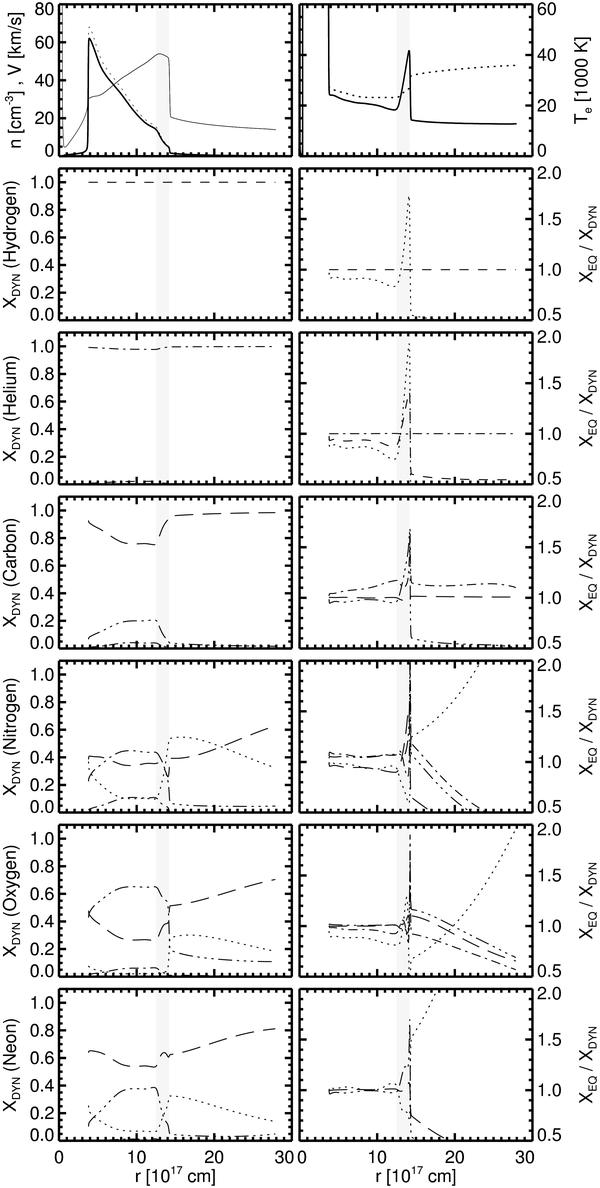Fig. 20

Radial ionisation structures for hydrogen, helium, carbon, nitrogen, oxygen, and neon of the Z = ZGD/10 model presented in Fig. 7. The two top panels show again the underlying nebular structures: densities (ions = thick, electrons = dotted), gas velocity (thin), both left, and electron temperatures (dynamical = solid, equilibrium = dotted, right). The shadowed vertical strip marks the region occupied by the shell’s leading shock in all panels. The ionisation fractions, X, are labelled as follows: dotted = neutral (hydrogen and helium only), short-dashed = 1st ionisation, dash-dotted = 2nd ionisation, dash-dot-dot-dot = 3nd ionisation, long-dashed = 4th ionisation, and dotted = 5th ionisation (except for hydrogen and helium), and are displayed in the left panels for the dynamical model (Xdyn). The ionisation fractions are omitted inside the contact discontinuity (r < 3.5 × 1017 cm) in order to avoid confusion. On the right, the ratios between the equilibrium (eq) and dynamical case (dyn) are shown. Only the ratios of major ionisation fractions, which are seen also in the left panels, are rendered for clarity.
Current usage metrics show cumulative count of Article Views (full-text article views including HTML views, PDF and ePub downloads, according to the available data) and Abstracts Views on Vision4Press platform.
Data correspond to usage on the plateform after 2015. The current usage metrics is available 48-96 hours after online publication and is updated daily on week days.
Initial download of the metrics may take a while.


